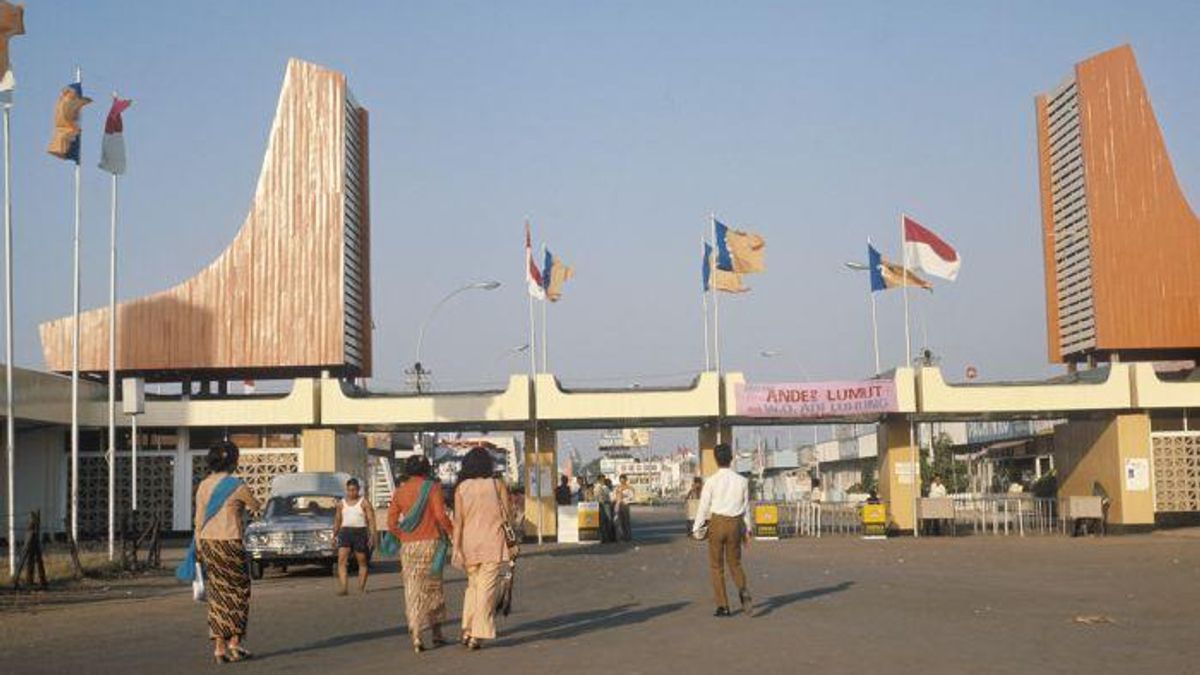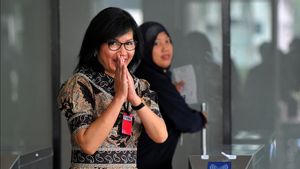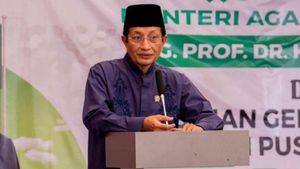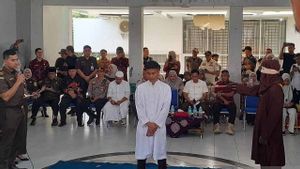JAKARTA - There is nothing wrong with the nickname Jakarta as the entertainment center of the country. The glitter of entertainment in Jakarta has been famous since the Dutch era. The form is present in the form of Gambir Market. The Gambir Market concept then inspired Jakarta Governor Ali Sadikin (1966-177) to create the Jakarta Fair or Pekan Raya Jakarta (PRJ).
In his hands, PRJ then became a byword to all corners of the country. Moreover, PRJ has become a big event every Jakarta's birthday. The emergence of the Gambir Market in Batavia (Jakarta) which began in 1906 was not a coincidence.
The night market was worked on seriously by the Dutch colonial government for the purpose of commemorating the coronation of Queen Wilhelmina on August 31, 1898. The event was held from August 31 to mid-September every year.
As a result, every event held at the Koningsplein -- now the National Monument -- is always eagerly awaited by the residents of Batavia. In addition to the exhibition, Gambir Market has a variety of entertainment. There is entertainment for children, there is also entertainment for adults.
Some of them are open-air cinemas or idoep pictures -- in Betawi speech, musical performances, to boxing matches. At the same time, a variety of Betawi specialties, such as kerak telor, appear to be peddled in every corner of Gambir Market. Because of that, Gambir Market in its entirety can raise three things: parties, exhibitions and rah-rah.
“A boisterous market. It consists of a field, houses with ethnic architecture made of bamboo, thatched roofs, and Dutch masters in dark pants, white starched shirts, bow ties, and shiny hair. There are tobacco booths, skateboards filled with children, and don't forget, when the sun goes down, European-style dances and strong wine-scented drinks," Arif Zulkifli wrote in Tempo Magazine entitled Pasar Gambir in the Colonial Era (1999).

The product exhibition at Gambir Market also looked interesting. Moreover, the booths in the night market were specially designed by the famous Batavia architect JH Antoinisse. He often takes the concept of regional houses alternately: Balinese, Chinese, or Minangkabau.
Each visitor is free to choose which booth they are interested in. The same goes for entertainment. Where they are free to choose to enjoy the entertainment they like. Even more interesting, since the opening and closing events, fireworks are always held.
“Besides the exhibition, it is also filled with various entertainments, such as open and closed cinemas, various agility games, kongkurs keroncong (live Java) and music concerts. Gambir Market has changed since 1921 with its modern appearance. The market activity ended in 1939,” said Zeffry Alkatiri in his book Pasar Gambir, Chinese Comics and Shanghai Ice (2010).
“Not a few entertainers have emerged and are well-known thanks to this market. Examples are Miss Riboet, Annie Landouw, Bram Titaley or Bram Aceh and Abdullah as a keroncong singer. Several boxers, such as Kid Bellel, Kid Darlin, Kid Yusuf, Young Sattar and Boby Nyo. They have become better known for their frequent fist fights in the box ring which is provided every Sunday night (during Gambir Market),” he added.
Gambir Market the forerunner of PRJ
Even after the Japanese era, Gambir Market did not operate for a long time, in the memory of many people the echo of the greatness of the Night Market is still awake. Included in the memory of Ali Sadikin. As a child, Ali wanted to be like his older brothers who had the opportunity to visit Gambir Market.
Unfortunately, World War II crushed his dreams. The only way to find out fun stories related to Gambir Market is only through stories and the Bandung Java Bode newspaper.
The result, since serving as Governor of DKI Jakarta, he wants "revenge" to make something similar like Gambir Market. Incidentally one of the things that crossed his mind was the name Jakarta Fair. The name emerged with the presence of large entertainment centers in various countries of the world, such as the Hambur Fair, the Leipzig Fair.
For this reason, Ali Sadikin assumes that everywhere there is the term "fair" which is promotional in nature, meaning that there is also entertainment as a sweetener. At that time Ali Sadikin combined the Gambir Market with the industrial fair in the first Jakarta Fair in 1968 in Gambir. The Jakarta Fair was then presented to celebrate Jakarta's birthday which fell on June 22. The celebration lasted for approximately two months in a row.

“The first Jakarta Fair was held on June 15, 1968 to celebrate the 441th anniversary of the City of Jakarta with the theme 'Development, Progress & Prosperity.' At that time, Mr. President Suharto was pleased to inaugurate the opening of the first Jakarta Fair," wrote Ali Sadikin in his book Gita Jaya (1977).
Ali added that a forum like PRJ is very much needed by Jakarta. Because, in addition to being a forum for exhibitions and promotions, PRJ is also used as an effort to provide healthy and cheap entertainment and recreation places for Jakarta residents.
So, in PRJ, the colors of entertainment are combined with bright lights, full of excitement through a massive promotion. The goal is that PRJ is able to attract visitors, especially those from other cities. After that the event was then held regularly every year to celebrate Jakarta's birthday.
The implementation was then awaited by many people. As a form of anticipation, just when Kemayoran Airport was moved to Cengkareng, Jakarta, the DKI government moved PRJ to Kemayoran. At that new location, PRJ became more prestigious, followed by the change of the name Jakarta Fair to PRJ.
"That's how it was originally called: Jakarta Fair. But in the middle of the trip, I changed the name to PRJ, along with trying to reduce the use of foreign languages in the midst of life in this capital city. Yes, there are times when I raise my voice to use more names in foreign languages,” said Ali Sadikin as quoted by Ramadhan KH in the book Bang Ali: Demi Jakarta 1966-1977 (1992).
*Read other information about HISTORY or read other interesting articles from Detha Arya Tifada.
Other MEMORIESa
The English, Chinese, Japanese, Arabic, and French versions are automatically generated by the AI. So there may still be inaccuracies in translating, please always see Indonesian as our main language. (system supported by DigitalSiber.id)









